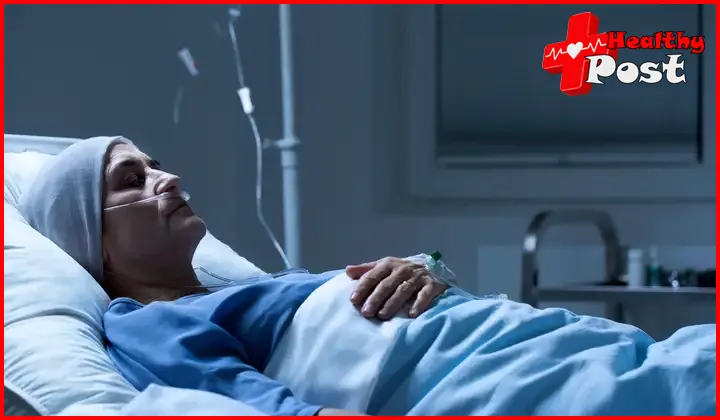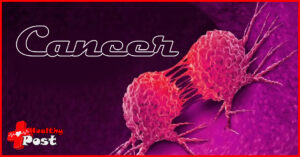
What is cancer? The most complete and detailed information
Cancer is a disease that occurs when malignant cells grow in the body. Cancer cells clump together to form a mass called a tumor and can spread to other more distant areas throughout the body.
What is cancer?
Cancer is a disease that occurs when malignant (or dangerous) cells grow in the body. These cells can form almost anywhere, including the brain, lungs, pancreas, and more. Cancer cells clump together to form a mass called a tumor and can spread to other more distant areas throughout the body. Although some cancers can be fatal, others can be successfully treated with methods such as surgery and chemotherapy.

What causes cancer?
Sometimes it is difficult to determine the exact cause of someone’s cancer. However, there are some risk factors that increase a person’s chance of developing cancer. Generally speaking, these may be hereditary or environmental – that is, the cancer may “run in families” or be caused by exposure to sunlight, radiation or tobacco smoke. There are some cancer risk factors that people can control (for example, avoiding smoking), and there are some risk factors that they cannot control (such as age). Here are some factors thought to cause cancer.
Genetic causes

Cancer may be caused by genetic mutations. First, some background: Humans have an estimated 20,000 to 25,000 genes, all of which are made of DNA. Think of DNA as a kind of blueprint. This is the code that tells your genes how to make proteins, the molecules that maintain and support the body’s organs and tissues.
If a person’s DNA undergoes a “mutation,” or change — from, say, harmful chemicals in tobacco smoke or the sun’s ultraviolet rays — the information in the genes can be rearranged or deleted. These errors, called DNA mutations, then lead to the growth of cancer cells, which multiply throughout the body.
But a person can also be born with a genetic mutation. The National Cancer Institute (NCI) estimates that about 5 to 10 percent of cancers are caused by genetic mutations inherited from the mother or father. For example, people who inherit mutations in the BRCA1 and BRCA2 genes are more likely to develop breast and ovarian cancer than those whose DNA does not contain these mutations. That’s why some people may want to get tested for these inherited gene mutations, especially if certain types of cancer run in the family.
Note: In 1990, researchers discovered a gene directly related to hereditary breast cancer , named breast cancer gene No. 1, or BRCA1 in English. In 1994, another gene related to breast cancer was discovered, called BRCA1. BRCA2.
Age
Although people can develop cancer at any age, 87% of cancers in the United States are diagnosed in people over the age of 50, according to the American Cancer Society (ACS). The median age at cancer diagnosis is 61; for prostate cancer, it’s 66; for prostate cancer, it’s 68; and for prostate cancer, it’s 70, according to the NCI.
Sunlight
The energy from the sun is called ultraviolet or ultraviolet radiation, and it reaches the Earth in two forms: UVA and UVB rays. Both damage DNA in human skin cells and are major risk factors for skin cancer. Sunlamps and tanning beds are other sources of UV rays.
radiation
X-rays and gamma rays are two other types of radiation – both found in natural and man-made devices, such as imaging tests, scanners and some power plants – that can cause mutations in DNA. This may lead to cancer in the future.
Tobacco leaf
Tobacco smoke contains at least 69 cancer-causing chemicals, including arsenic and formaldehyde. According to the American Lung Association, smoking is not only the main cause of lung cancer, with 80% to 90% of lung cancer deaths related to smoking, but also related to lung cancer, esophageal cancer, laryngeal cancer, oral cavity cancer, throat cancer, kidney cancer, liver cancer, Pancreatic cancer, gastric cancer, etc.
Other carcinogens
Like tobacco smoke, radiation and ultraviolet light, other chemicals such as asbestos and soot can cause mutations in a person’s DNA. These DNA mutations eventually trigger the growth of cancer cells. Where you live and how you work may expose you to certain carcinogens.
General signs and symptoms of cancer
Cancer can cause almost any type of symptom, from fatigue to pain to shortness of breath and more. In some cases, cancer patients notice symptoms early in the disease, but in other cases, the cancer may go unnoticed until the tumor grows larger (such as putting pressure on organs) or spreads to other parts of the body. Doctors can also spot some of the warning signs of cancer: They may notice lumps or lesions on a patient’s body or find abnormal clumps of cells during routine imaging tests. Signs and symptoms of cancer include:
A lump
Some cancers can be felt under the skin, especially tumors that start in the breast. However, most of the time a lump is not cancer – in fact, a lump can also feel like a lump in normal breast tissue.
People with breast cancer may feel that the tissue in or near the breast (or under the arm) is thick or hard. Experts say if a person notices these signs, they should check the other breast to see if they experience a similar sensation. If both breasts feel the same, the lump may be normal. However, if you notice changes in your breasts, contact your doctor.
Bleeding
Bleeding can occur in the early or late stages of cancer. Depending on the type of cancer, people may notice blood in their stool (which may be a sign of cancer), urine (a symptom of bladder or kidney cancer), or mucus with a cough (a sign of cancer). Abnormal nipple discharge may be a sign of cancer.
Unusual bowel movements or bladder pain
Cancer can cause symptoms such as rectal bleeding, blood in the stool, abdominal cramping, or pain when urinating. Pain during urination or other changes in bladder function may also be signs of bladder or prostate cancer.
Persistent cough or hoarseness
A common symptom of cancer is a cough that doesn’t go away or continues to get worse. Cancers of the lungs, larynx, and thyroid can also cause changes in the voice, making it appear harsh.
Skin changes
Moles or skin lesions that change in size, shape, or color may be a sign of skin cancer. Basal cell carcinoma can appear as red or pink growths, while squamous cell carcinoma can have a rough surface. Melanoma is a particularly dangerous form of skin cancer, and warning signs include failure to heal, pain, oozing, or bleeding.
Other cancers can also cause skin changes. Jaundice, or yellowing of the eyes and skin, may be a sign of pancreatic cancer, and excessive hair growth may be a sign of cancer.
Cancer type
Cancer can develop almost anywhere in the body. In most cases, cancers are named after the organ or tissue in which they first develop—for example, breast cancer refers to the growth of cancer cells in breast tissue, and prostate cancer refers to the growth of cancer cells in the prostate.
There are more than 100 types of cancer, some of which are rare, such as lip, tongue and gallbladder cancer. The most common types of cancer include:
- Bladder Cancer
- breast cancer
- colon and rectal cancer
- endometrial cancer
- kidney cancer
- leukemia
- liver cancer
- lung cancer
- melanoma
- non-hodgkin lymphoma
- non-melanoma skin cancer
- pancreatic cancer
- prostate cancer
- Thyroid cancer
Stages of cancer

After a person is diagnosed with cancer, doctors divide the disease into “stages.” This process (called “staging”) helps doctors quantify the amount of cancer in the body and determine what type of treatment a person should receive.
There are five stages of cancer: stage 0 (or carcinoma in situ), stage 1, stage 2, stage 3, and stage 4 . Lower stages indicate that the disease is more localized or controllable, while higher stages refer to cancer that has spread to other parts of the body. Generally speaking, early-stage cancers are more likely to be successfully treated than late-stage cancers.
The most common method of staging cancer is the TNM system developed by the American Joint Committee on Cancer. T represents information about the tumor itself, including its size or whether it has invaded any nearby tissue. N indicates whether the cancer has spread to lymph nodes (structures in the body that contain immune cells) and how many lymph nodes are affected. Finally, M refers to how far the cancer has metastasized (or spread) to distant parts of the body.
Each letter is followed by a number that further describes how far the cancer has spread or grown. For example, a person with stage 1 cancer may be classified as T1, N0, M0, which means the tumor may have grown into one of the muscle layers of the gastrointestinal tract but has not spread to nearby lymph nodes or other more distant parts of the body. area . Doctors will take all this information into consideration and classify the cancer as stage 1, 2, 3, or 4.
An important note: The stage of the cancer does not change even if the tumor shrinks or the disease metastasizes.
Stage 4 cancer
This type of cancer, also called metastatic cancer, has spread to distant organs and lymph nodes in the body. One example: In stage 4 cancer, the tumor may have spread from the breast to the bones, brain, liver, or lungs. Common treatments for stage 4 cancer include chemotherapy, radiation therapy, and surgery. While different types of cancer have different survival rates, overall, treating the disease can be challenging if it is caught in its late stages.
Stage 3 cancer
In stage three, the cancer may have spread to the lymph nodes but has not yet spread further into the body. For example, in a woman with stage 3 cancer, the cancer may have invaded the chest wall and reached nearby lymph nodes, but it has not spread to other parts of the body, such as the brain or bones.
Cancer stagea 2
Broadly speaking, stagae 2 cancers may have penetrated the walls of surrounding muscle tissue and penetrated to a few very close lymph nodes, but they have not yet reached more distant lymph nodes or other areas of the body. Doctors may refer to some stage 2 cancers as “localized” cancers. Which means the cancer cells are found only in the tissue or organ where the disease started. For example, in a woman with stage 2 cancer. The tumor may be less than 5 centimeters long but has not yet reach any lymph nodes or other parts of the body.
Cancer stage 1
Stage 1 cancer is often call early-stage cancer. It has not spread beyond the area of the body where it was first discovered. In women with stage 1 cancer, the tumor has not spread beyond the breast. Although it may have spread to nearby lymph nodes near the armpit. Generally, it is easier to treat early-stage cancer than late-stage tumors; options can include surgery and chemotherapy.
Cancer stage 0
Also known as carcinoma in situ, stage 0 cancer is defined as a group of abnormal cells. That have not spread to other surrounding areas of the body. Stage 0 cells are sometimes called precancerous cells. These cells may or may not become cancerous in the future. That can be remove early with treatments such as surgery or radiation therapy.
For example, a woman with stage 0 cancer may have ductal carcinoma in situ, or DCIS (carcinoma in situ of the breast). In which abnormal cells develop in the lining of the breast ducts. In this case, the cells do not spread to surrounding breast tissue but may spread later.
Cancer treatment
Doctors will decide which treatment a person should receive based on the type and stage of cancer. Some people may need only one type of treatment, while others may need multiple forms of treatment.
Surgery is one of the most common treatments for cancer and is often performed on localized tumors. That have not spread to other parts of the body. The surgery can be “open,” meaning the doctor makes one large incision to remove the tumor, surrounding healthy tissue, and nearby lymph nodes, or “minimally invasive,” in which the surgeon uses special tools Remove the growth by making several small incisions.
Radiation therapy is another cancer treatment used to kill or shrink cancer cells. Radiation can be used alone or in combination with surgery or chemotherapy. Because radiation therapy also damages nearby healthy cells, many people experience side effects such as fatigue, hair loss, and nausea.
Doctors can also use drugs to kill cancer cells . This treatment, call chemotherapy, can be given in a variety of ways. Including intravenously, locally, or by mouth, in pill or liquid form. Like radiation therapy, this treatment can cause side effects such as nausea and hair loss.
Other cancer treatment options include hormone therapy (used to treat some prostate and breast cancers) and immunotherapy (which helps strengthen the body’s immune system to better fight the disease). Finally, some people may qualify for clinical trials, or studies conducted by experts to research cancer and test new treatments.
Although there is currently no cure for cancer. The treatments themselves can help some cancers go into remission and potentially eradicate them forever.
Is cancer really “cured”?
Generally speaking, doctors cannot be sure that a person is cured of cancer. This is because there is no guarantee that the disease will never come back.
However, most cancers that come back do so within five years. Therefore, if a person’s cancer remains in complete remission, with no signs and symptoms of cancer for more than that period of time, the cancer may never come back.


5 thoughts on “What is cancer? The most complete and detailed information”